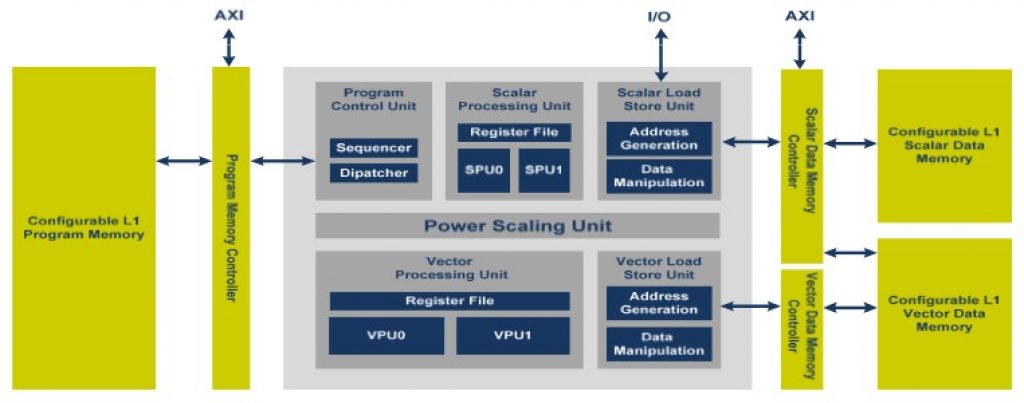The 2012 Consumer Electronic Show officially begins next Monday night with Steve Ballmer's (Microsoft CEO) keynote, but a number of companies are already announcing their latest-generation technologies and products ahead of the crush of press releases to come. Among them is Embedded Vision Alliance member CEVA, who yesterday morning unveiled the newest member of its MM3000 architecture, the CEVA-MM3101. CEVA's particular focus with this product iteration is two-fold; image enhancements, and embedded vision algorithm processing, the latter manifested in function implementations such as face tracking and gesture interfaces.
From the press release:
CEVA-MM3101 is a fully programmable, low power platform developed to meet the advanced image and vision processing use-cases in camera-enabled devices, including smartphones, tablets and smart TVs. The CEVA-MM3101 platform integrates video and imaging functions that today are distributed among multiple processor engines, to address the image and video pipeline, image enhancement, embedded vision applications and image encoding functions. Instead of using fixed-function engines or running these functions on the main application processor, the CEVA-MM3101 is specifically architected to support all of these functions on a single processor, resulting in a 20X reduction in power consumption when compared to CPU-based solutions.
In addition, the powerful CEVA-MM3101 enables a new level of high-performance image enhancements and embedded vision applications that are not feasible on RISC CPU based designs. For example, the CEVA-MM3101 is capable of processing video streams of 1080p, or 8 megapixel images at 12 frames per second, simultaneously with advanced performance-driven features such as video stabilization, color correction, wide dynamic range (WDR), face detection and gesture recognition.
And CEVA also obtained a quote from Embedded Vision Alliance Founder Jeff Bier:
I congratulate CEVA for developing a powerful platform, integrating imaging and vision-related technologies. Next-generation mobile and consumer devices are rapidly adopting embedded vision capabilities including gesture-based user interfaces and object recognition for applications such as augmented reality games, security, and navigation. Implementing this type of visual intelligence in consumer products requires a combination of high processing performance, programmability, energy efficiency, and low cost. Fielding a licensable processing subsystem specifically targeting embedded vision applications is an excellent step forward for CEVA and the industry.
For more on the EVA-MM3101, please visit the vendor's website. I also plan more in-depth coverage on the product and its associated development tools suite in BDTI's InsideDSP newsletter, to be published later this month.


